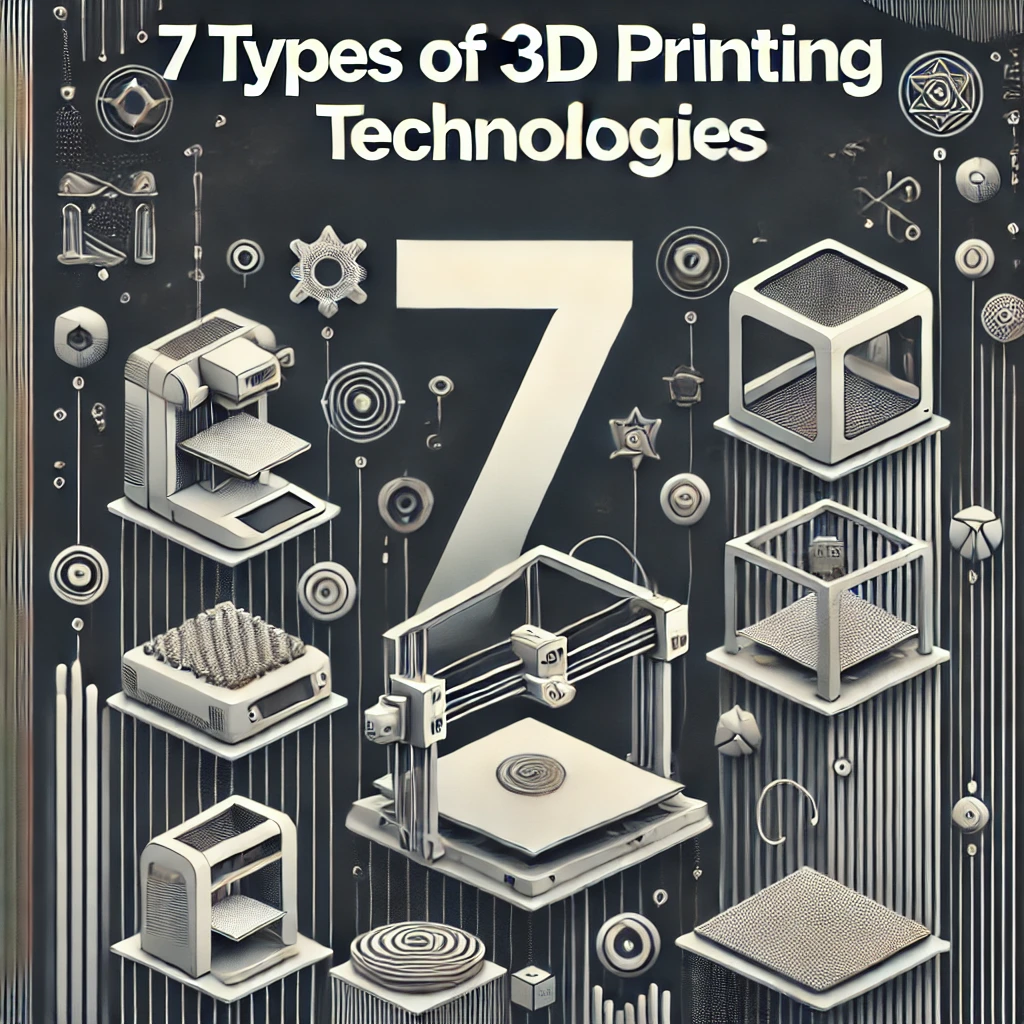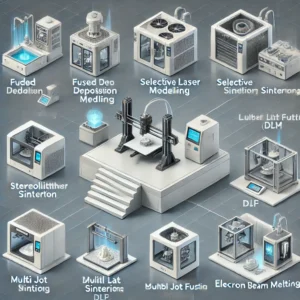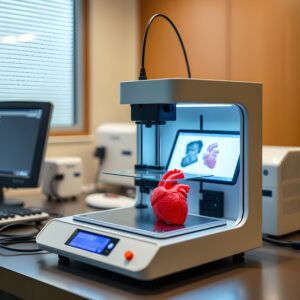7 Types of 3D Printing Technologies Explained

1. Fused Deposition Modeling (FDM)
FDM is one of the most popular and accessible 3D printing methods. It works by extruding thermoplastic filament layer by layer, creating objects based on digital models. FDM is cost-effective and widely used for prototyping and hobby projects.
2. Stereolithography (SLA)
SLA uses ultraviolet (UV) light to cure liquid resin into solid layers. This technology offers high precision and is widely used in industries like dentistry, jewelry, and prototyping for its ability to create smooth, detailed parts.
3. Selective Laser Sintering (SLS)
SLS works by using a laser to fuse powdered materials into solid parts. This technique is ideal for complex geometries and strong functional prototypes, making it a favorite in aerospace, automotive, and medical industries.
4. Digital Light Processing (DLP)
DLP is similar to SLA but uses a digital light projector instead of a UV laser. This method is faster than SLA and can produce highly detailed parts, making it suitable for industries like dentistry and consumer goods.
5. Multi Jet Fusion (MJF)
MJF builds parts layer by layer using fine powder, which is then fused using a fusing agent and heat. This technology is known for producing strong, functional parts with fine details and smooth surface finishes.
6. Electron Beam Melting (EBM)
EBM uses a high-powered electron beam to melt metal powders layer by layer. This method is widely used in aerospace and medical industries to create complex, durable metal parts with high strength-to-weight ratios.
7. Direct Metal Laser Sintering (DMLS)
DMLS is similar to SLS but focuses on metals. It uses a laser to sinter metal powders into fully functional parts, making it a go-to for creating intricate metal components used in industries like aerospace, automotive, and healthcare.
Why Knowing the Types of 3D Printing Matters
Choosing the right 3D printing technology is vital for the success of your project. Whether you’re prototyping, producing medical devices, or building industrial-grade parts, understanding the strengths and limitations of each method will help you make informed decisions.
Visit our other website: machinepwr.com




